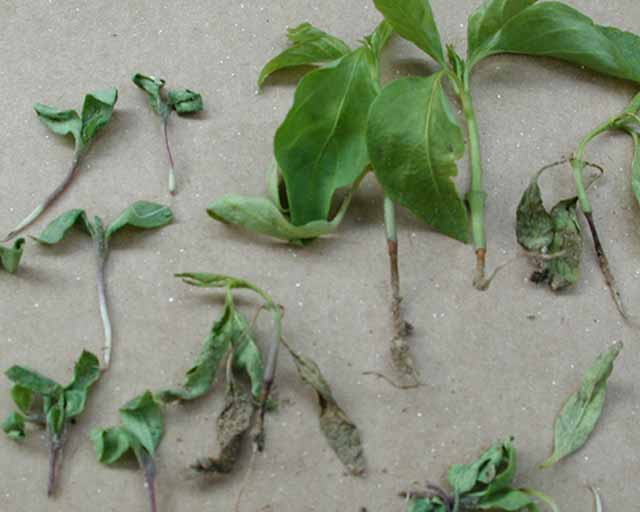
Exercise 9
Exercise # 9
DAMPING OFF SEEDLINGDISEASES
Pythium sp. and Phytophthora sp. of order Perenosporales and class Oomycetes, are the cause of damping off diseases. These fungi produce zoospores which require moisture to cause infection; hence, their prevalence is mostly observed in vegetables and fruit nurseries where comparatively moisture is high. These are also commonly found, especially in those soils, where water is remained standing due to poor drainage or heavy texture of soil. Dampness in nurseries increases the susceptibility of seedlings to these fungi. Zoospores of these fungi which are present in the upper layer of soils, move in the thin film of water, attack the seedlings just above the soil and cause infection. The seedlings at the point of infection become rotted and girdled down.
Materials
- Samples of damping off seedlings infected with Pythium and Phytophthora spp.
- Cultures of Pythium and Phytophthora spp.
Procedure
- Draw the sketches of symptoms of damping off seedlings.
- Take the cultures of above stated damping off fungi and observe their mycelia, sporangia, sporangiospore, antheridia and oogonia after making their temporary and permanent slides.
Questions
- What is difference between oogonia and antheridia?
Oogonia is female part of the fungi while antherida is male part of fungi.
- Zoospores are produced in which fungal phylum?
Zoospores are produced in phylum Chytridiomycota
- Why damping off fungi attack just above the soil surface?
Because these fungi are present in standing water which is touching the base of the stalk of the plant, therefore these fungi attack just above soil surface.
- What could be possible control measures of damping off diseases?
Soil sterilization, soil solarization, fungigation and fumigation are possible ways to control these fungi.
- What are the main differences between Pythium and Phytophthora fungi?
- spp. are mostly pathogenic, Pythium spp. are mostely saprophytic.
- spp. species have limited host range while Phythium spp. have wider range of host.
- spp. do not form cyst while Phythium spp. form the cyst.


